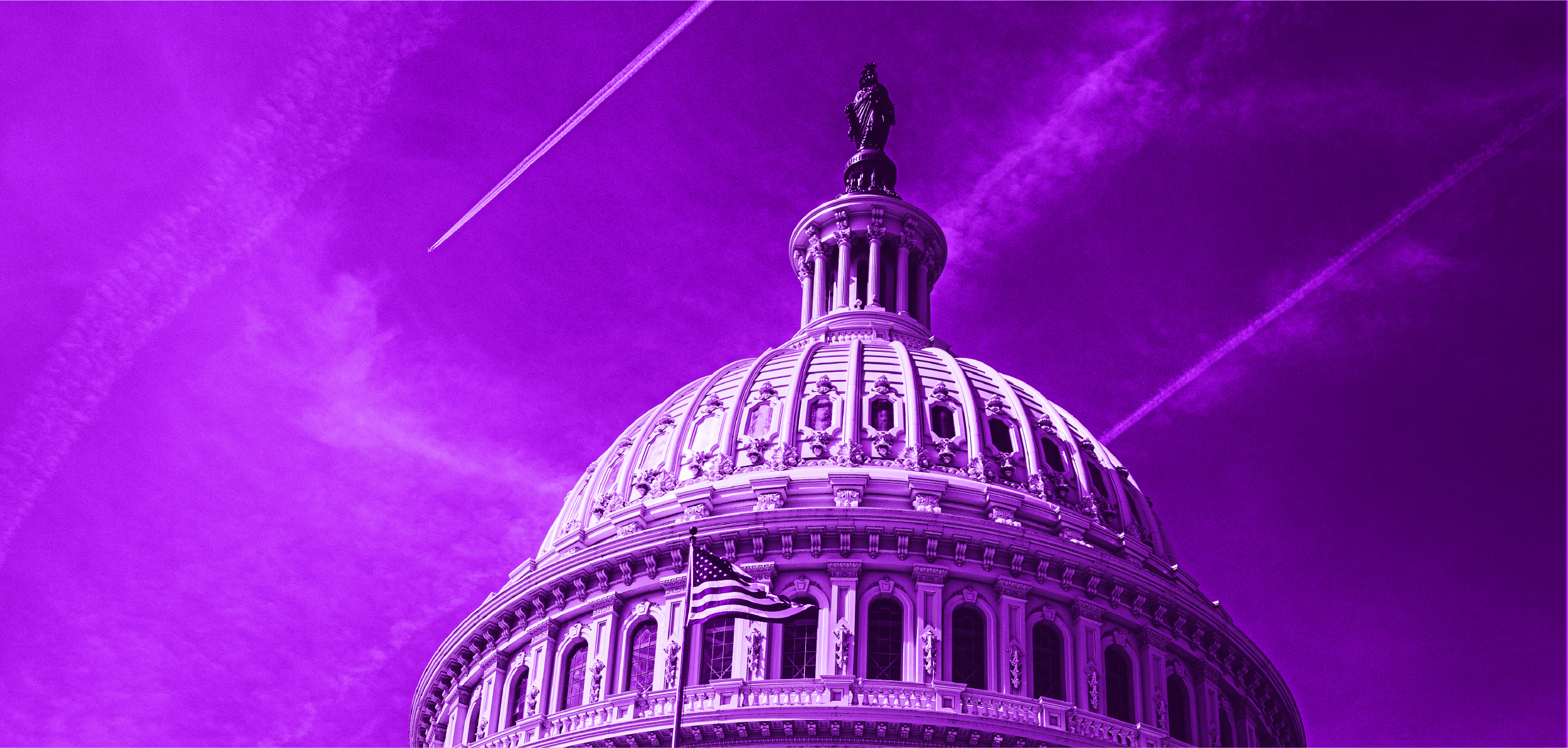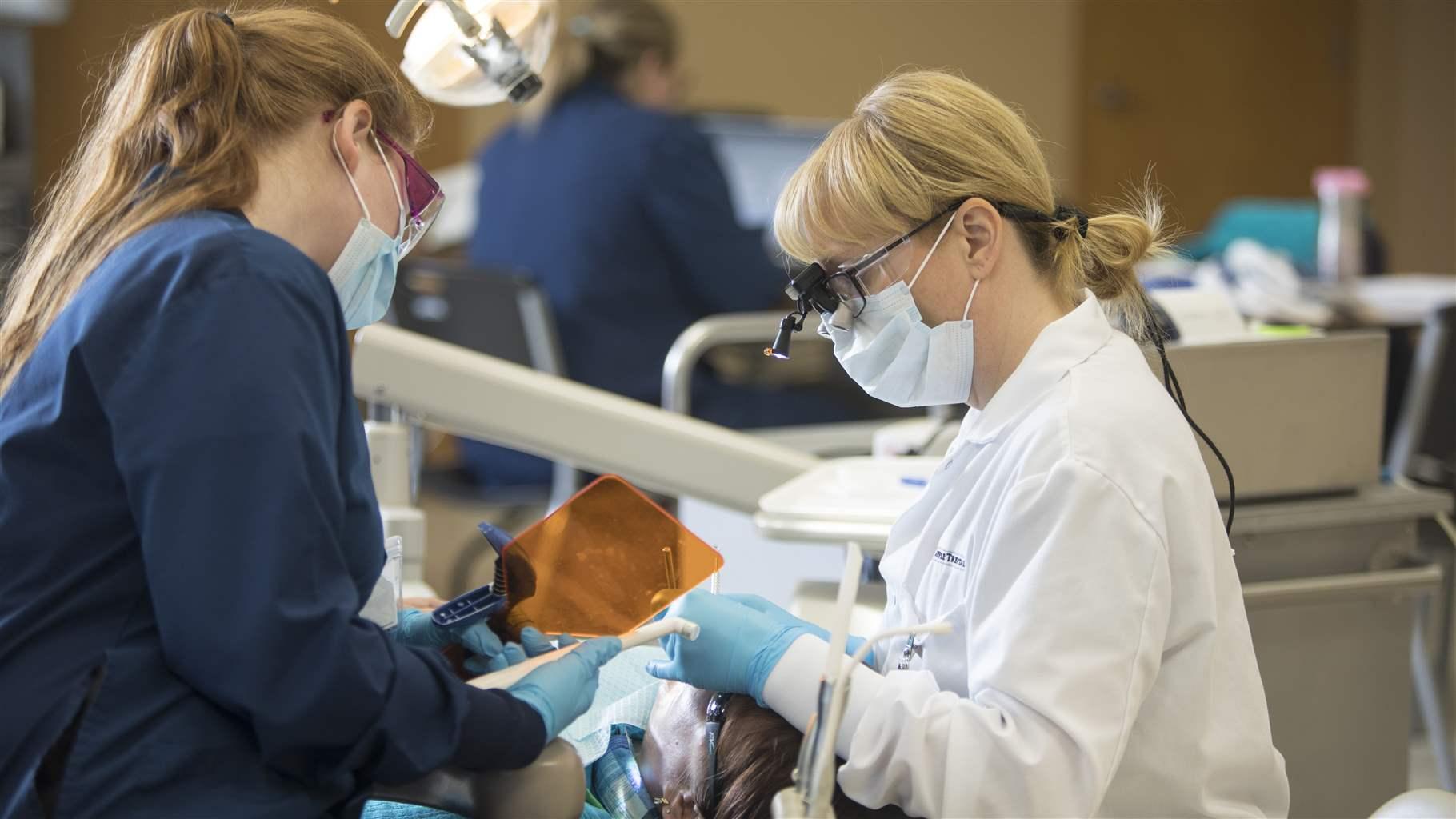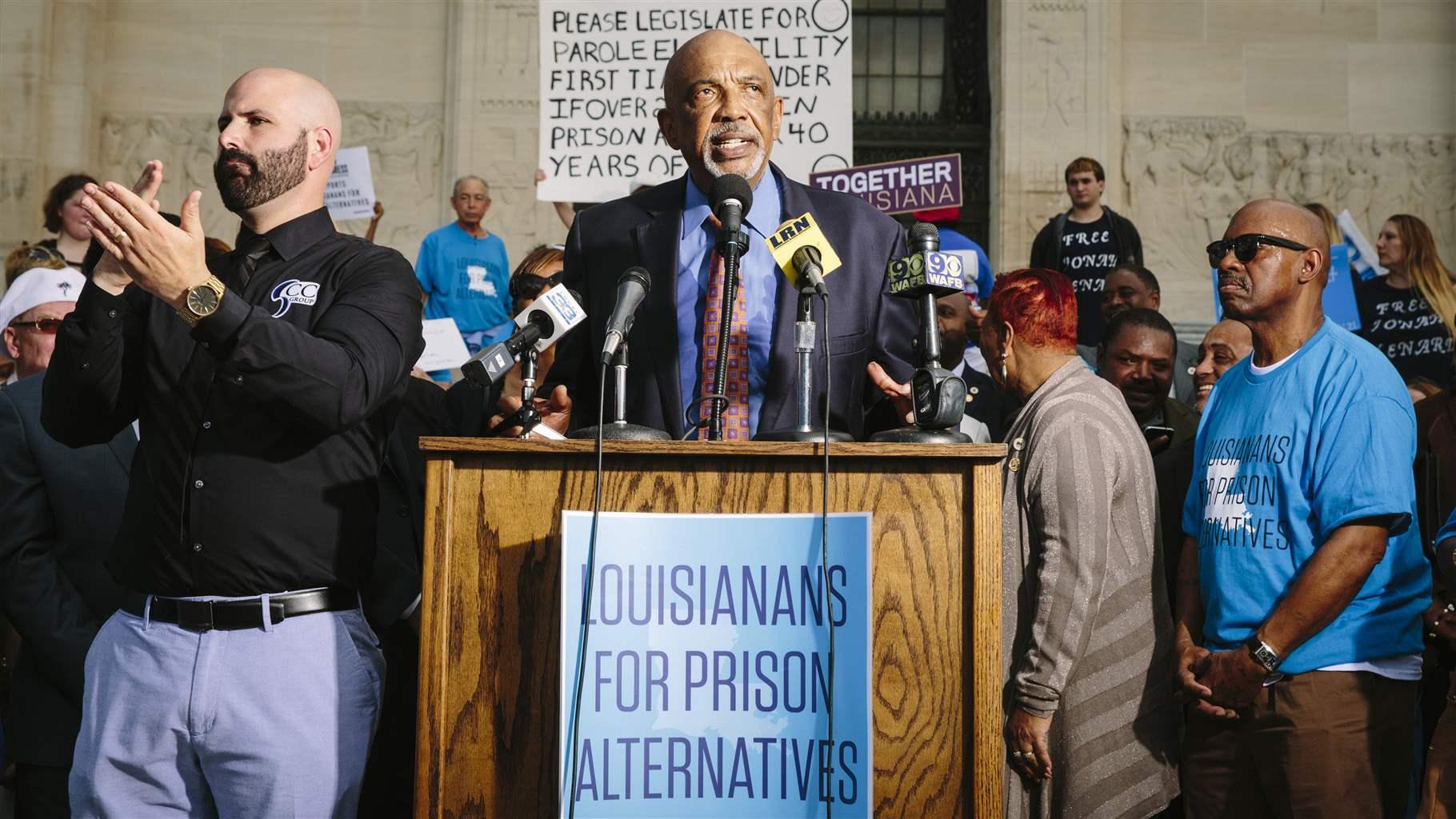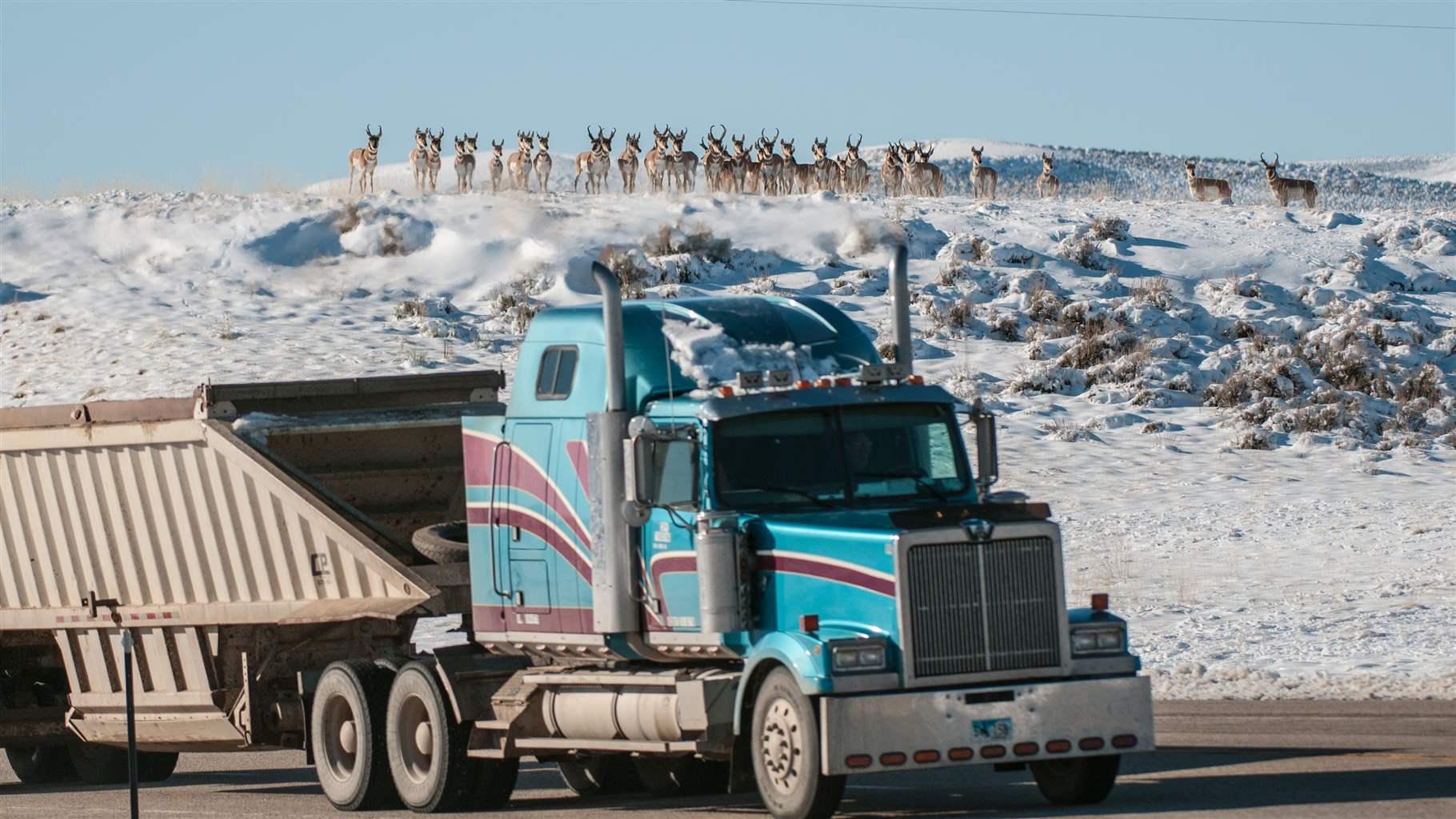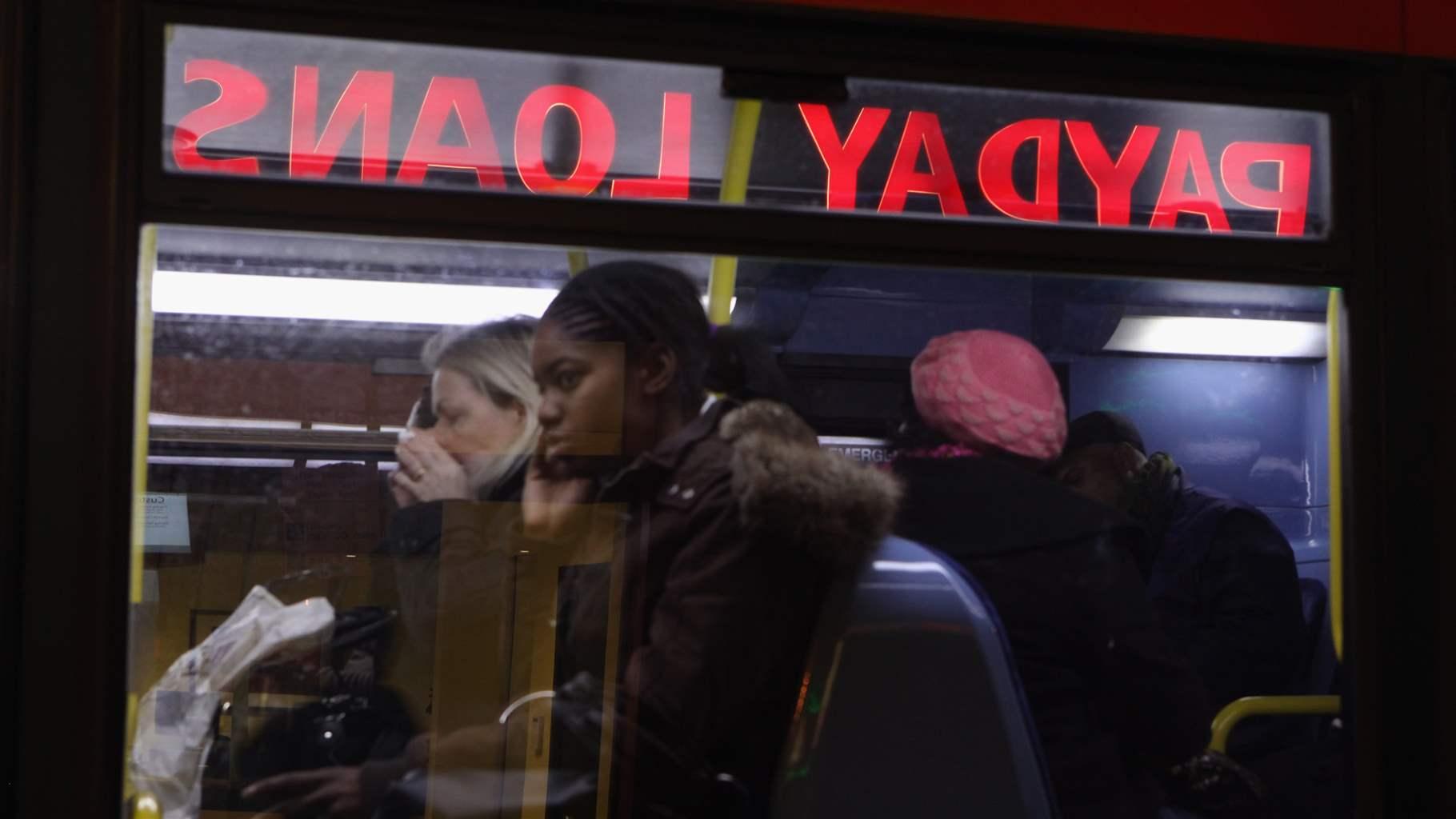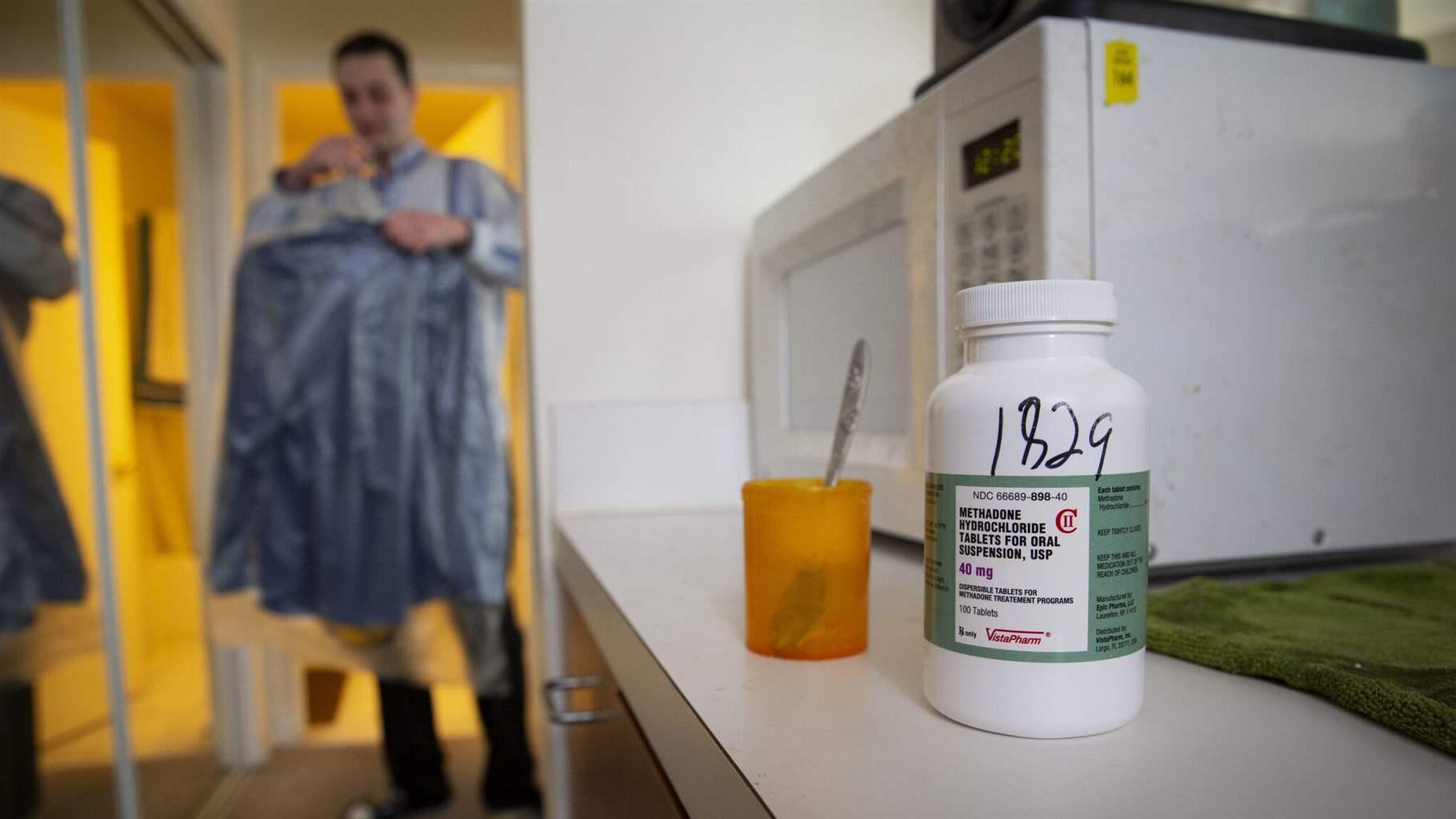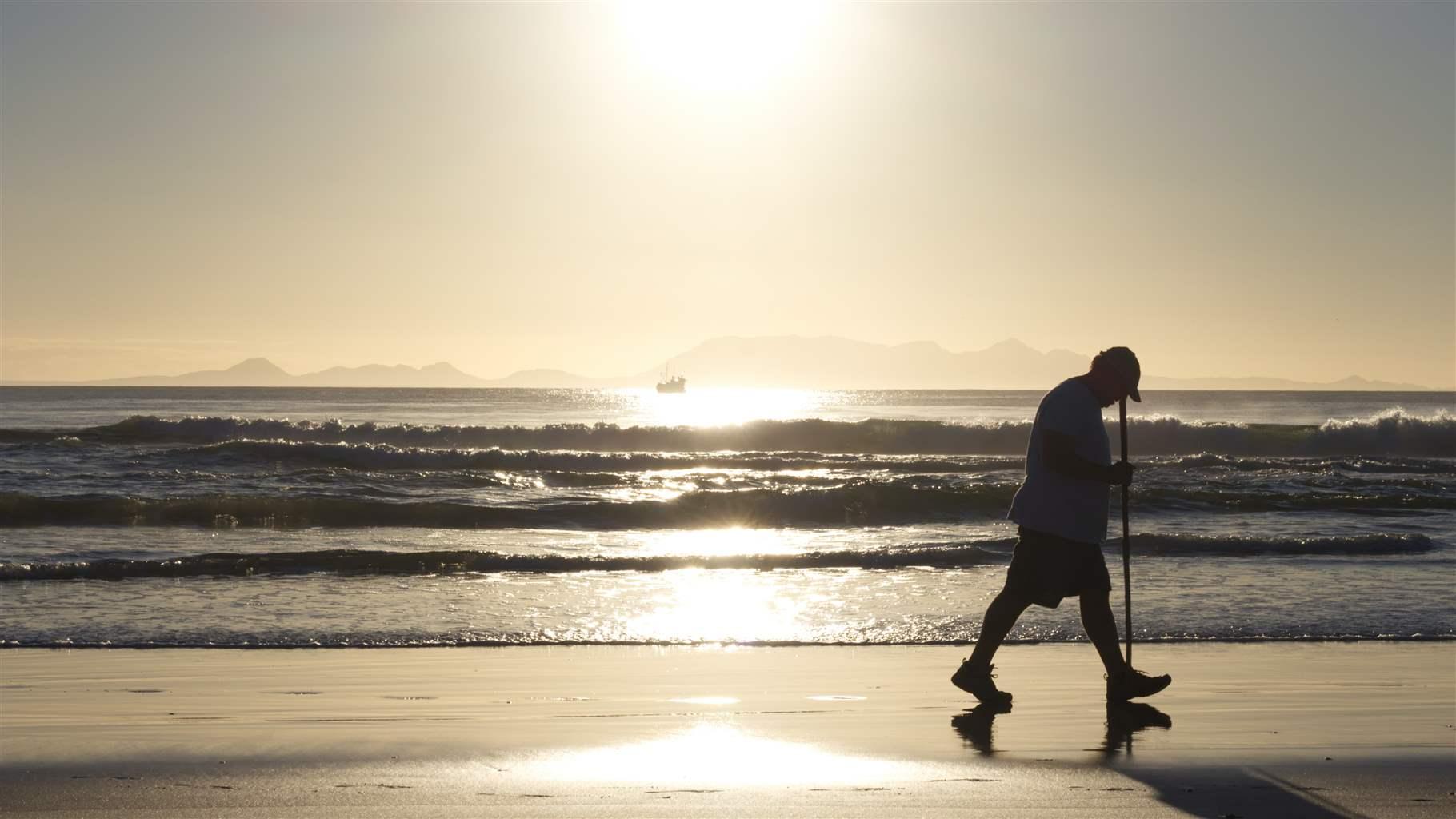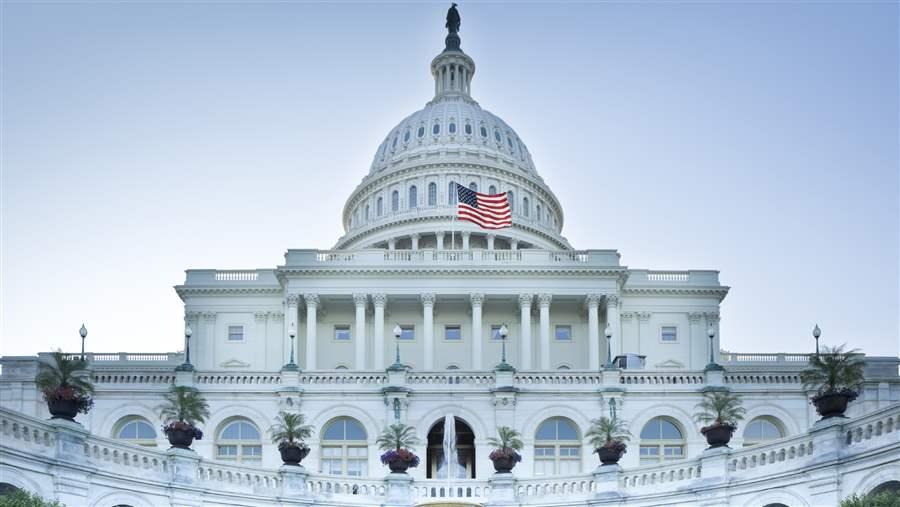
Making a difference with data-driven policymaking
By: Susan K. Urahn
In a recent interview about science for The Pew Charitable Trusts’ podcast, “After the Fact,” Dr. Anthony Fauci said, “Policy should not be made in a data-free zone.” He was succinctly articulating an approach Pew has long worked to advance—that policy informed by data and rigorous research makes government more effective and helps it better serve the public interest.
The ability of government to function effectively and at what scale is often debated, of course, particularly during election years. But there is good news. The pandemic has increased the visibility of evidence-based policymaking as well as tools such as “data dashboards,” which provide integrated views of key information at a glance for both public officials and citizens. These approaches are well-tested methods used by governors of both political parties who rely on data and evaluation to measure outcomes and determine the programs that deliver results—the ideas that are making a difference. So, over the next several weeks, we’re highlighting what we call “states of innovation”—brief case studies of evidence-based policies that offer workable solutions to long-standing problems that can perhaps inspire others.
One example is criminal justice reform. Louisiana and Kansas have both implemented important reforms to their criminal justice systems. In Louisiana, a bipartisan package of bills steers people convicted of less serious crimes away from prison while strengthening alternatives to incarceration. In 2018, the number of people imprisoned in Louisiana for nonviolent offenses fell 20%, saving the state almost $18 million. Kansas in 2016 overhauled its juvenile justice system, after seeing arrests of minors decline by half over a decade without a corresponding drop in the number of young people at residential facilities. State leaders turned to evidence-based alternatives that include a focus on high-risk juveniles, limits on sending young people to facilities, and more resources for safely supervising minors at their homes.
Another example is payday loan reform. Two years ago, Ohio passed the Fairness in Lending Act. At the time, Ohio had the most expensive payday loans in the United States. But under this new legislation, monthly payments are limited to 6% of the borrower’s gross monthly income. Today, a three-month loan of $400 will cost an Ohio borrower no more than $109. Before the law’s passage, that same loan would have cost three times that amount.
Virginia created the Virginia Community Flood Preparedness Fund to help communities buy flood-prone properties, restore flood plains, and install living shorelines of natural plants and other materials to control erosion and protect habitat. And Wyoming is addressing the challenge of animal migration by building corridors to help wildlife safely cross major highways—and to protect drivers and their passengers.
Data-driven policymaking is not just a tool for finding new solutions for difficult challenges. When states serve their traditional role as laboratories of innovation, they increase the American people’s confidence that the government they choose—no matter the size—can be effective, responsive, and in the public interest.
Susan K. Urahn is president and chief executive officer for The Pew Charitable Trusts.
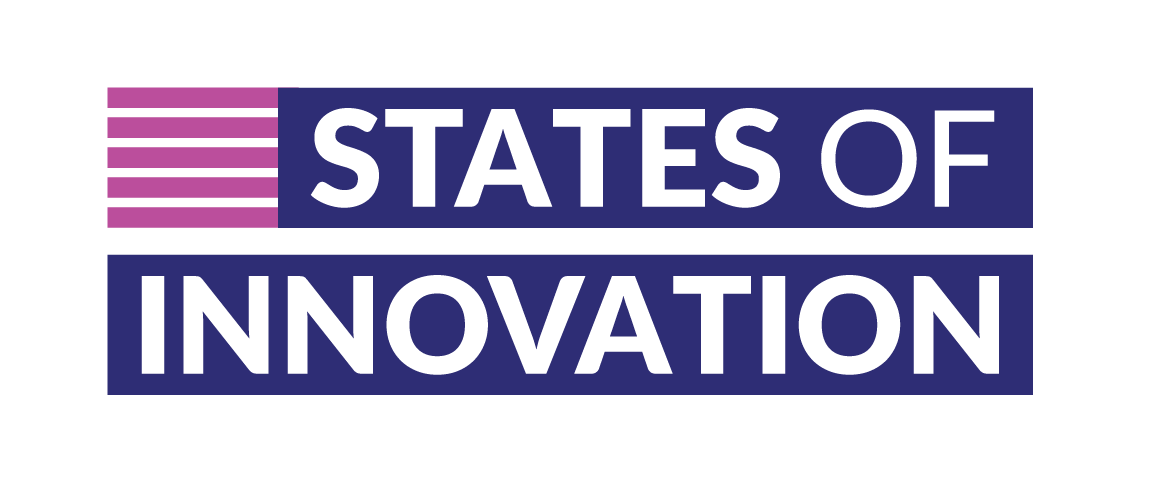
Putting Budgets to the Test
The recession caused by the coronavirus has triggered a sharp decrease in tax revenue, driving job losses and, for state governments, forcing widespread spending cuts. But Utah lawmakers had a head start on trying to close their budget gap, thanks to innovative budget stress testing. Rather than waiting for downturns and crises, stress testing means that states regularly review the impact of various economic scenarios on revenue and expenditures, and make adjustments. Unlike the federal government, states must have balanced budgets, and the tests are a proven way to help legislators prepare for tough decisions and ensure long-term fiscal health.
Learn more:
How to Reduce Flood Damage—For Good
Flooding is the costliest natural disaster in the nation. And as Hurricane Laura recently demonstrated, the economic impact on states from a major storm—including property damage, job losses, and shuttered businesses—can be devastating. Hurricanes can’t be stopped, but states are finding innovative ways to mitigate the harm. Texas took $800 million from a reserve fund to finance flood mitigation projects and now requires local officials to develop watershed-level flood plans. Virginia created a revolving loan program to fund community-scale and nature-based solutions, such as purchasing flood-prone properties and converting them to parks and greenways, and installing living shorelines. And New Jersey allows cities to collect fees from residents and business owners based on how much their properties contribute to storm runoff—funds that are then used to improve stormwater infrastructure.
Learn more:
Millions Lack Dental Care; Here’s a Solution
Untreated dental problems are often the first domino leading to tooth loss and other health care challenges. They have the potential to make chronic conditions, such as heart disease and diabetes, worse. And poor oral health can impair the growth and social development of children. To make matters worse, more than 56 million Americans live in areas where there is a shortage of dentists. But some states are stepping up with an innovative solution: dental therapists. Similar to physician assistants in medicine, these highly skilled midlevel providers often work in community settings, such as schools or nursing homes, and are trained to perform routine dental services, including fillings and temporary crowns. The Alaska Native Tribal Health Consortium introduced dental therapists in 2004. Five years later, Minnesota approved the nation’s first statewide legislation authorizing dental therapists and, now, a dozen states allow dental therapy in some capacity.
Lean more:
How to Reduce Prison Costs and Maintain Public Safety
In 2017, Louisiana’s Democratic governor and Republican legislature decided that the state should no longer be known for having the nation’s highest incarceration rate. That year, lawmakers appropriated $625 million for adult corrections; only education and health care cost taxpayers more. But the Legislature also passed 10 landmark bills that reduced the Louisiana prison population by 9% in the first two years after enactment and saved taxpayers almost $30 million by 2019—with 70% of that savings being reinvested in programs designed to reduce reoffending and to support victims. The measures steer people convicted of less serious crimes away from prison, strengthen alternatives to incarceration, reduce the prison terms of individuals who can be safely supervised in the community, and remove barriers to reentry. Over 10 years, these reforms are expected to reduce the prison and community supervision populations by 10% and 12%, respectively.
Learn more:
A Way to Protect Precious Rivers
Here is a fact—perhaps little known—about America’s rivers: They are the source of more than two-thirds of the drinking water in the United States and contribute more than $800 billion in direct consumer spending. Yet less than 1% of these waterways are under permanent federal protection. The Nehalem River in the Oregon Coast Range is one of Oregon’s longest rivers and home to wildlife, abundant salmon, and recreational opportunities, but it is not designated (or permanently protected) under the federal Wild and Scenic Rivers Act. So the state stepped in. With support from local stakeholders, Governor Kate Brown (D) signed an executive order protecting 17.5 miles of the Nehalem under Oregon’s Scenic Waterways program, a designation that covers both the river and one-quarter mile of the lands on either side.
Learn more:
Better Strategies on Juvenile Justice
America’s prison population skyrocketed over the past few decades, largely as a result of state laws and policies that placed more people behind bars and kept them there longer. But strategies are available that offer a better public safety return on taxpayer dollars. In 2016, Kansas embarked on a path to improve its juvenile justice system, following research that shows that the practice of confining juveniles tends to be no more likely to reduce recidivism than keeping them in their own homes for treatment—and can actually increase the likelihood of certain young people reoffending. A little more than two years later, the reforms showed clear signs of progress: The state’s youth prison population fell 31% from 2015 to 2018, and arrests decreased by 29% from 2015 to 2017. Additionally, the decline in confinement allowed the state to shift $30 million in savings to community-based programs, helping to provide effective supervision of young people while they remain with their families at home.
Learn more:
Making It Easier to Save for Retirement
About half of U.S. households aren’t saving enough for a secure retirement. One reason: About 30% of private sector workers lack access to a retirement savings plan through their workplace. Oregon launched an automatic individual retirement account (auto-IRA) in 2017 to help employers without retirement programs—especially small businesses—provide opportunities for their employees. Now, at no cost to the businesses that participate, workers are automatically enrolled—although they can opt out if they choose—and more than 63,000 workers have retirement accounts through the plan. A similar program in California will affect more than 6 million employees. In 2020, policymakers in Colorado created a savings program to help more workers, following evidence that found that greater retirement security can have ripple effects, boosting the local economy and adding tax revenue for the state—a positive sign for other states that are exploring whether to launch programs of their own.
Learn more:
Preserving Seagrass—and Boosting the Economy
Seagrass meadows are critical marine habitats. They serve as nursery grounds for many valuable fish and wildlife species, safeguard water quality, and play a role in lessening coastal erosion and mitigating the effects of climate change. Off Florida’s west coast, seagrass beds stretch for miles, and for decades they have supported a significant part of the regional economy– summertime scalloping, world-class fishing, and internationally renowned manatee-watching. That’s why the governor approved legislation in June establishing the 811-square-mile Nature Coast Aquatic Preserve to protect about 400,000 acres of seagrass north of Tampa. The move received widespread support from businesses, recreational fishing and marine industry organizations, and county commissions. Although the region’s economy has suffered during the COVID-19 pandemic, the preserve will help support businesses and tourism for generations to come.
Learn more:
Broadband That’s More Broadly Available
Not having access to broadband is a barrier to economic development for many communities in the U.S., and with the pandemic often requiring schools and colleges to use online learning, students who don’t have broadband can be left behind. One of those places had been Colorado’s Delta County, which also had suffered the closure of two coal mines and the loss of nearly 1,000 jobs, causing residents to move away. In 2015, the state Department of Local Affairs provided a grant to the region to help expand broadband. That led to a partnership with a local company that retrained former mine workers to build a fiber network. Now, Delta’s population is growing, and the county provides a rural alternative for city dwellers seeking a quieter lifestyle with online access to jobs.
Learn more:
Safe Passage for Animals, Safer Roads for People
When wildlife is forced to cross roads, it creates a safety issue—both for animals and humans. More than 1 million animals are hit each year throughout the nation, and as many as 200 people die in accidents. Just one stretch of highway southeast of Jackson, Wyoming, averaged 85 vehicle-animal collisions annually. In 2012, the state’s Department of Transportation completed a project to create safer wildlife crossings with bridges above and tunnels below the highway. In the first three years after construction, tens of thousands of animals used the structures, wildlife-vehicle collisions fell by 80 percent, and crossings by mule deer and pronghorn rose, contributing to stronger and healthier populations. Several states have implemented wildlife crossings as a cost-effective way to make roads safer for animals—and people.
Learn more:
Credit That’s Fair—and Affordable
Credit can be helpful for consumers—especially during tough economic times—as long as it’s affordable. But some payday lenders have been charging borrowers as much as 400% interest, and the worst offenders were in Ohio. But that changed in 2018 when Ohio passed the innovative and bipartisan Fairness in Lending Act. The law achieves three goals. It lowers prices, makes payments affordable, and gives borrowers a reasonable time to repay. Ohio now has some of the safest and lowest cost loans in the country while ensuring that lenders can still make a reasonable profit. Virginia also had weak protections for payday loans. But following the precedent set by Ohio, the commonwealth passed a small-dollar loan law earlier this year that is expected to save borrowers $1 billion in interest and fees over the next decade.
Learn more:
Expanding Treatment for Substance Problems
In 2019, more than 70,000 Americans died from a drug overdose—primarily opioids. And that was before COVID-19, which has people who use substances more vulnerable to the virus and less able to access drug treatment. But states are finding innovative ways to treat opioid use disorder (OUD). Rhode Island offers the three FDA-approved medications for OUD in its jails and prisons, and refers individuals to treatment immediately upon their release. Vermont increased the availability of treatment by creating nine “hubs” around the state for intensive treatment and multiple “spokes” where treatment is part of general medical care. Other states are also finding innovative ways to increase capacity, including Indiana, where treatment will be available no more than an hour’s drive for any resident.
Learn more:
How to Strengthen Public Pensions
Although state pension plans for public employees have recovered most of the investment losses incurred in the early days of the pandemic, that has not made up for the decades-long failure of many states to adequately fund their pension obligations. As recently as 2018, states had just 71% of the assets needed to pay promised benefits and only seven states were 90% funded. The aggregate funding gap for state-run pensions that year was $1.24 trillion, and that number is expected to grow to almost $1.4 trillion in 2020. Nevertheless, some states have recognized the threat posed to their fiscal health from unfunded pension obligations. Pennsylvania, for example, created an innovative hybrid plan for new employees that is part pension and part defined contribution plan, and it is expected to save the state’s taxpayers up to $20 billion over the next 30 years while still ensuring a secure retirement for public employees.
Learn more:
